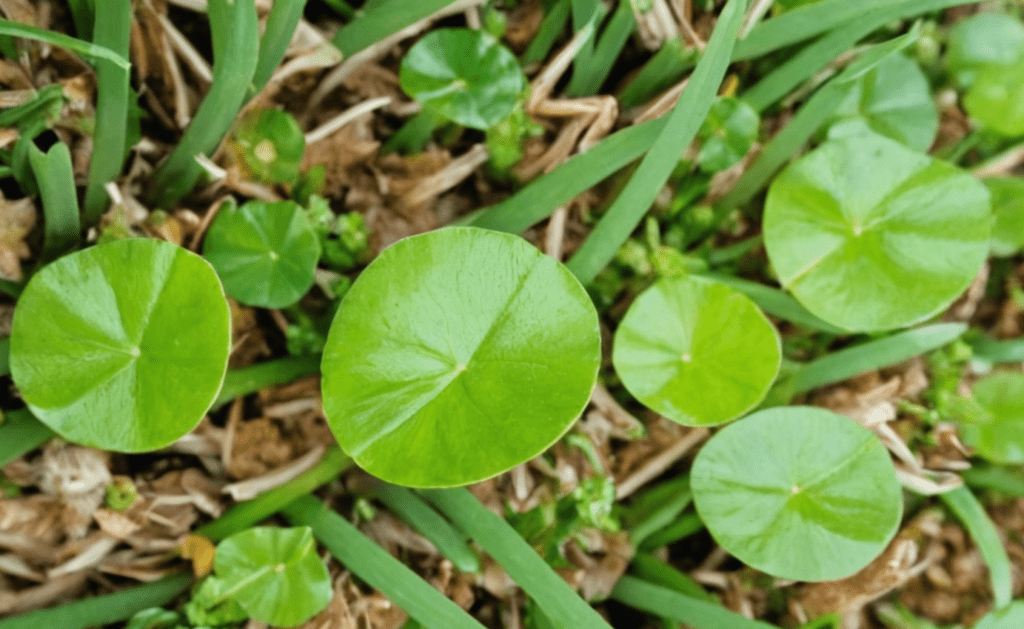
You’ve likely encountered dollar weed (Hydrocotyle spp.) if you’ve ever strolled through your yard and noticed round, coin-like leaves sprouting up among your grass. Also known as pennywort, this persistent plant can quickly take over lawns and gardens if left unchecked.
But don’t worry—we’re here to help you understand how to manage dollar weed naturally, discuss effective weed killers, and identify look-alike plants. Let’s dive in!
What Is Dollar weed?
Dollar weed is a perennial broadleaf weed that thrives in warm, moist environments. It’s called dollar weed because its leaves resemble silver dollars—round, glossy, and about the size of a coin.
Identification Tips
- Leaves: Round with scalloped edges, bright green, and about 1 inch in diameter.
- Growth Pattern: Low-growing and spreads via creeping stems called rhizomes.
- Habitat: Prefers damp, marshy areas but can invade lawns, gardens, and even cracks in sidewalks.
Imagine a tiny lily pad on your lawn—that’s dollar weed!
Why Is Dollar weed a Problem?
Dollar weed isn’t just an eyesore; it can outcompete your lawn grasses for nutrients, water, and sunlight. It spreads quickly, forming a dense mat that can choke out desirable plants. Its presence often indicates underlying issues in your lawn’s health, such as overwatering or poor soil conditions.
Weeds That Look Like Dollar Weed
Before you tackle dollar weed, it’s essential to ensure that’s what you’re dealing with. Some common look-alikes include:
Dichondra
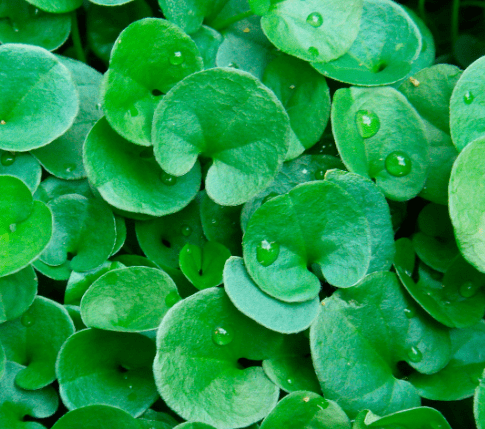
- Leaves: Kidney-shaped rather than perfectly round.
- Growth: Forms a dense mat but doesn’t have the scalloped edges of dollar weed.
Gotu Kola
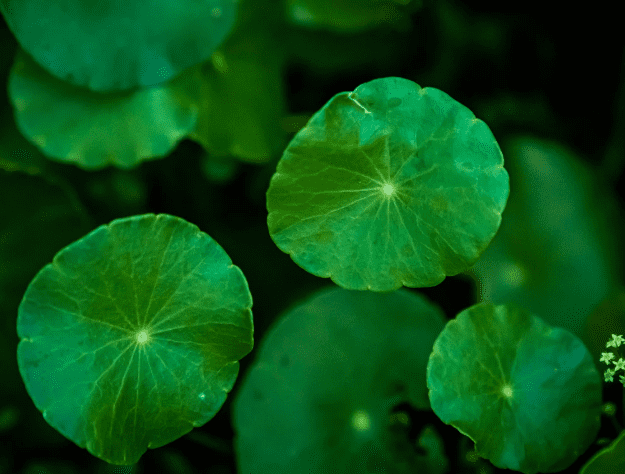
- Leaves: Similar in shape but often larger and used in herbal medicine.
- Habitat: More common in garden beds than lawns.
Tip: Carefully examine the leaf shape and growth habits to accurately identify your weed.
Natural Ways to Get Rid of Dollarweed
Good news! You can manage dollar weed without resorting to harsh chemicals. Here are some natural methods:
1. Adjust Your Watering Practices
Overwatering is the number one cause of dollar weed proliferation.
- Reduce Irrigation: Water your lawn less frequently but more deeply to encourage strong root growth in grasses.
- Improve Drainage: Aerate your lawn for better water penetration and reduce surface moisture.
2. Hand-Pulling
- When to Pull: When the soil is moist after a rainstorm or deep watering.
- How to Pull: Grasp the plant at the base and pull gently to remove the root system.
This method is time-consuming but adequate for small infestations.
3. Mulching
- Apply Mulch: In garden beds, apply a thick layer of organic mulch.
- Benefits: Blocks sunlight, inhibits dollar weed growth and enriches the soil.
4. Promote a Healthy Lawn
- Proper Mowing: Keep your grass at the recommended height for its species to shade out weeds.
- Fertilization: Use a balanced, slow-release fertilizer to strengthen your lawn.
- Soil Testing: Check pH levels and adjust as needed to create unfavorable conditions for dollar weed.
5. Natural Herbicides
- Vinegar Solution: Mix white vinegar with water (in a 1:1 ratio) and spray directly on the weeds.
- Boiling Water: Carefully pour boiling water over dollar weed clusters, avoiding nearby plants.
Note: Natural herbicides can also harm desirable plants—use them cautiously.
Best Dollarweed Killers
If natural methods aren’t cutting it, you might consider selective herbicides. While not “natural,” they can be effective when used responsibly.
Selective Herbicides
- Products: Look for ones containing metsulfuron or atrazine, like All-in-One Weed Killer RTS.
- Application: Follow the product label carefully to target dollar weeds without harming your lawn.
Always wear protective gear and consider the environmental impact before using chemical herbicides.
Turf Tolerance to Herbicides for Dollar weed Control
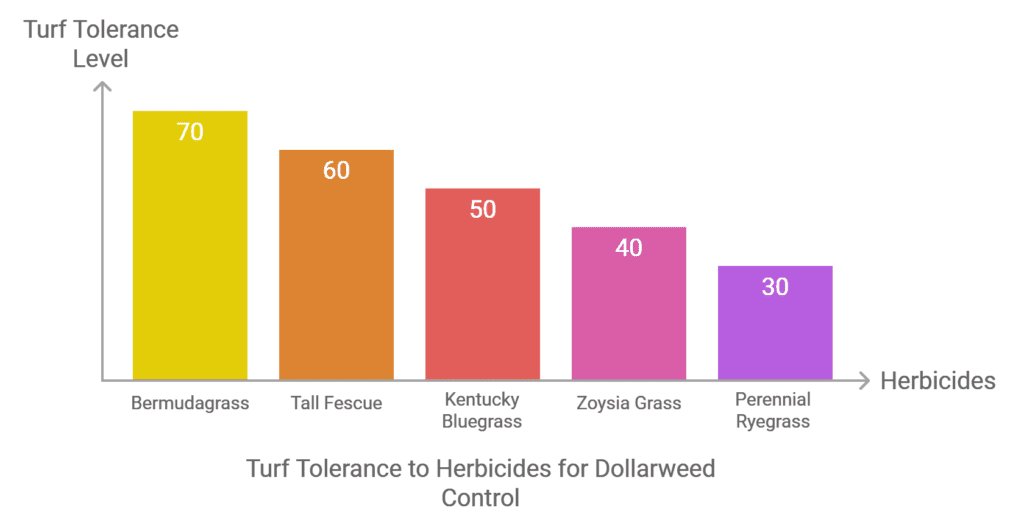
Glyphosate-Containing Products for Homeowners
Ornamental plants may be treated with glyphosate through spot applications. Glyphosate is a non-selective herbicide that should be used with extreme caution. For the purpose of controlling dollarweed, apply a 3% glyphosate solution using a pump-up sprayer.
Follow the instructions on the label for combining and using the product. Do not allow the glyphosate spray mist to come into contact with ornamental foliage or stems, as this will result in severe damage.
A cardboard shield may be employed to prevent the drift of glyphosate spray onto adjacent ornamentals.
The following are examples of products in homeowner sizes that contain glyphosate:
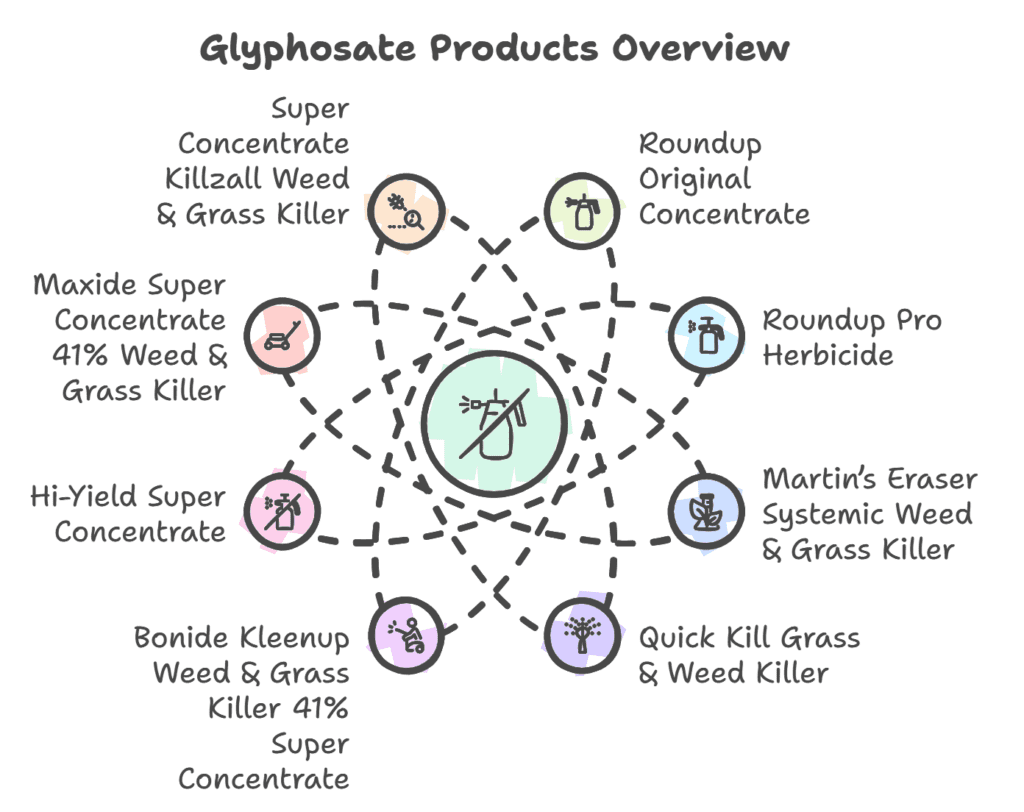
Preventing Dollar weed
An ounce of prevention is worth a pound of cure! Keep dollar weed at bay with these tips:
- Avoid Overfertilizing: Excess nutrients can encourage weed growth.
- Regular Lawn Maintenance: Mow regularly, aerate annually, and overseed thin areas.
- Monitor Moisture Levels: Ensure your lawn isn’t staying too wet for too long.
Frequently Asked Questions
Q: Can dollar weed be beneficial in any way?
A: While dollar weed is considered a nuisance in lawns, it’s edible and has been used in traditional medicine. However, most homeowners prefer to keep it out of their yards.
Q: Is dollar weed a sign of poor soil?
A: Dollar weed often indicates overly moist or poorly drained soil. Improving soil conditions can help reduce its presence.
Q: Will mowing eliminate dollar weed?
A: Mowing alone won’t eliminate it, but keeping your grass at the proper height can help your lawn grass outcompete the weeds.
Q: Are there any animals that eat dollar weed?
A: Some wildlife may nibble on dollar weed, but it’s not enough to control an infestation.
Q: Can I use corn gluten meal to control dollar weed?
A: Corn gluten meal can be a pre-emergent herbicide for some weeds but is generally less effective against established dollar weed.
Conclusion
Dealing with dollar weed can be frustrating, but with patience and the right approach, you can reclaim your lawn naturally. Remember, the key is addressing the underlying conditions that allow dollar weed to thrive—excess moisture and poor lawn health.
We hope this guide has been helpful! Feel free to share your tips or ask questions in the comments below. Happy gardening!
Enjoyed this article? Please share it with your friends, or check out our other gardening guides to keep your green thumb growing!


























